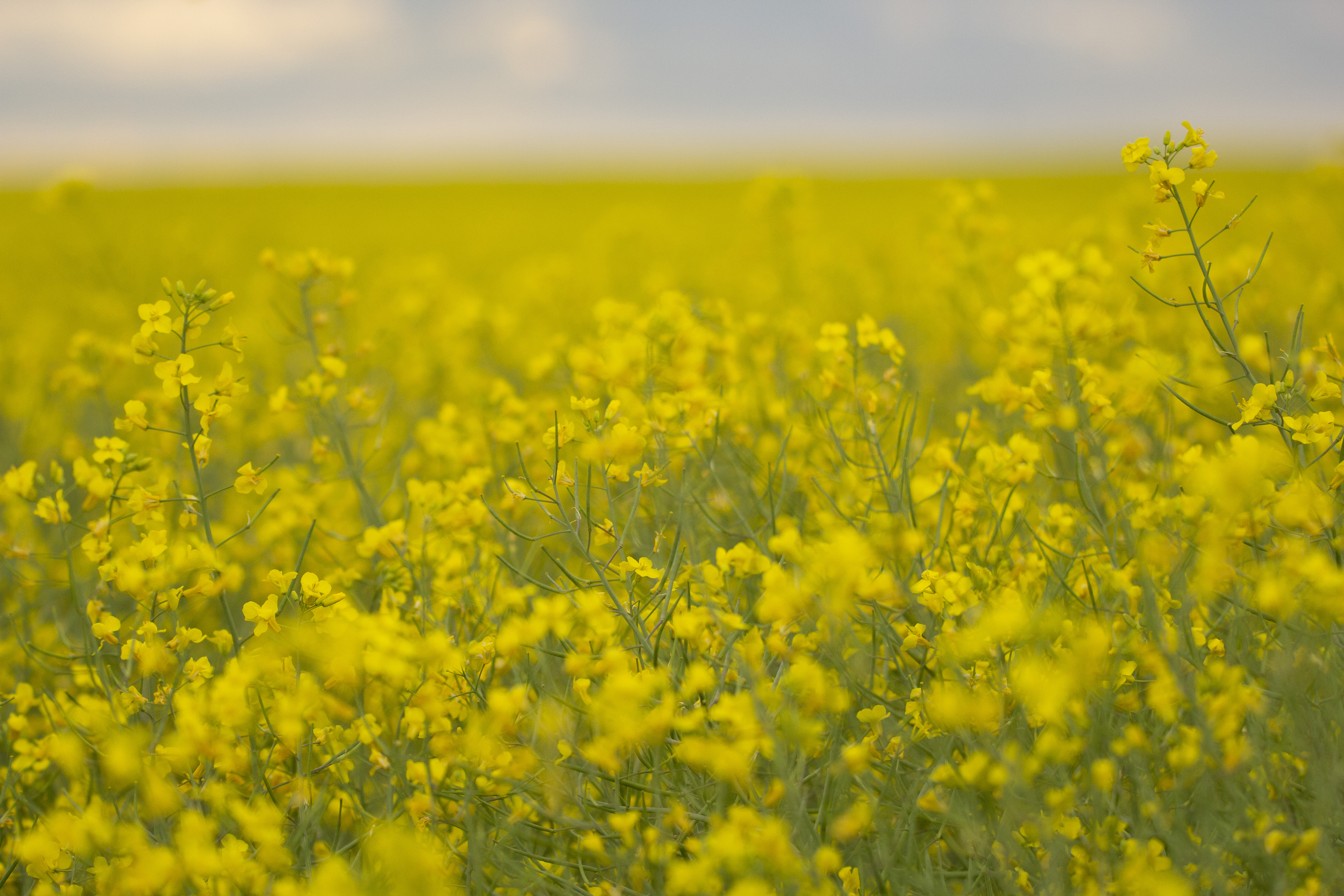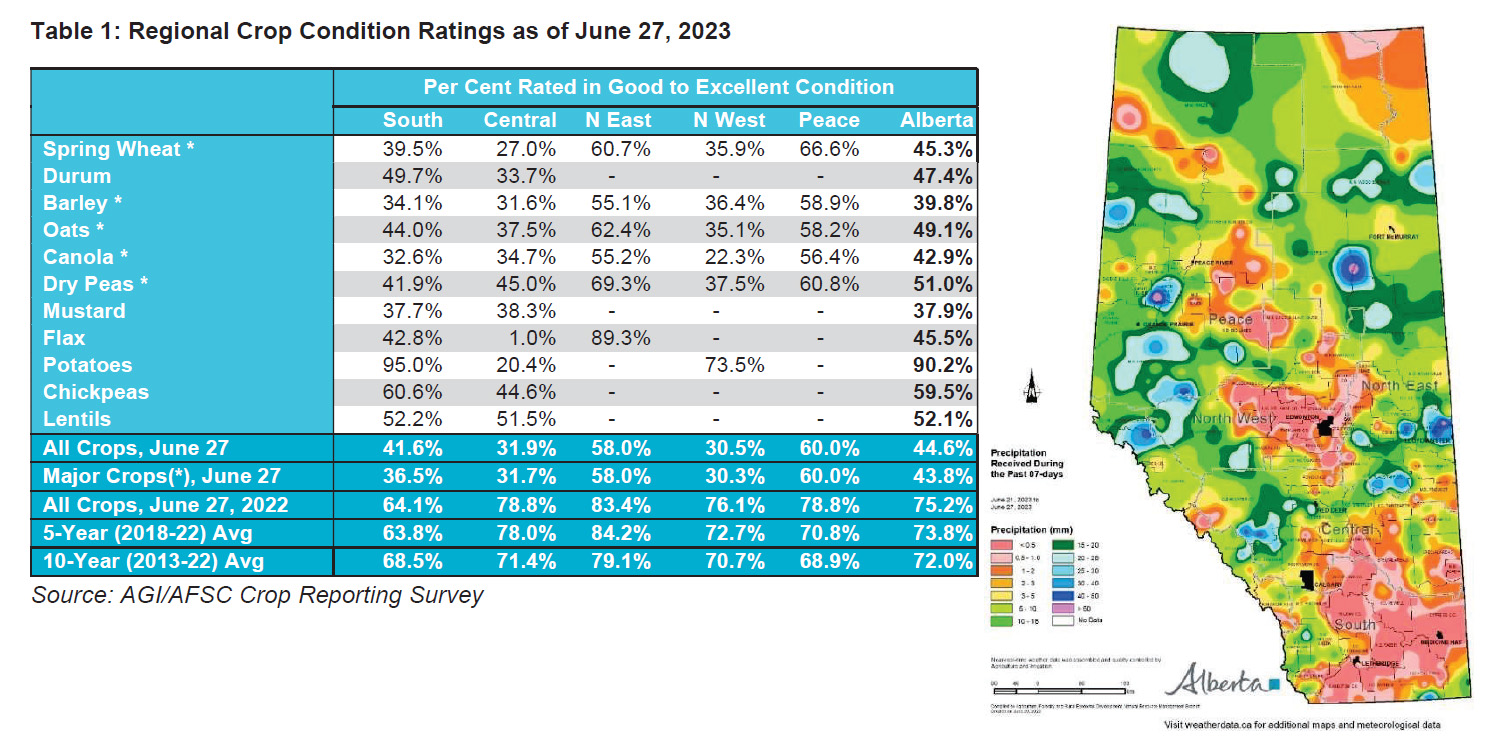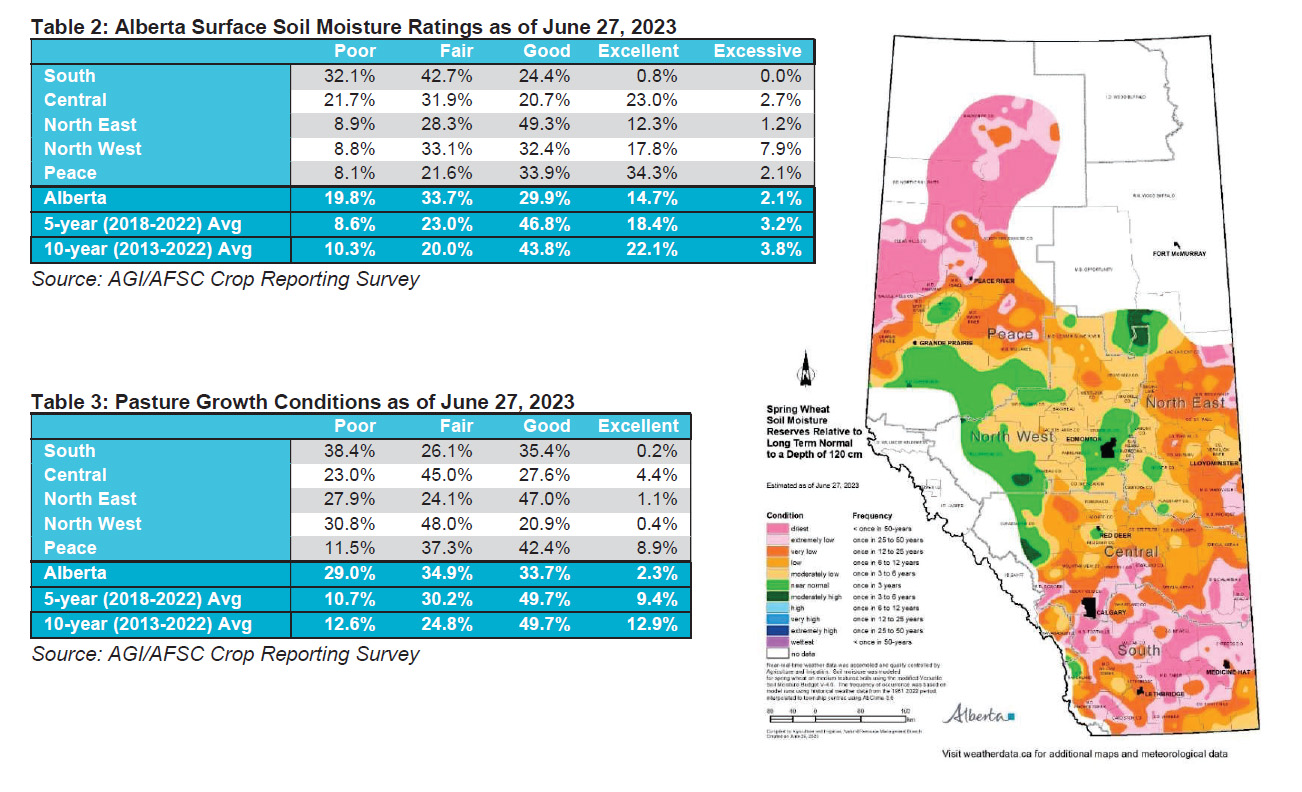Alberta Crop Report as of June 27, 2023

Crop Report, provided by the Government of Alberta Agriculture and Irrigation, as of June 27, 2023:
Over the last week, a patchwork of rain fell across Alberta increasing the crop variability throughout the province. Thunderstorm activity has been widespread, and some areas may have received more rain than depicted in the map below. While these rains were welcomed by survey respondents, portions of the dry areas in the South, Central, and Peace regions missed out on significant rainfalls and report a need for further moisture. Flooding concerns were noted in some areas of the Northwest region.
As of June 27, provincial crop conditions for all crops are reported at 45 per cent good to excellent, which is 29% below the five-year average and 27 per cent below the 10-year average. The Peace Region retains the highest per cent of crops rated in good to excellent condition at 60%, with the Northeast region reporting a slightly lower 58%, followed by the South region at 42%, the Central region at 32%, and the Northwest at 31%. The reported condition for all crops is a slight improvement over the condition reported on June 13 (the last full report date) with notable improvements in ratings for the major crops of spring wheat, barley, oats and canola.
For crop staging, most spring cereals are reported as either booting or near the end of stem elongation in all regions, except the South which is reporting widespread head emergence. Provincially, 22% of the canola crop was reported to have begun flowering, ahead of the five-year and 10-year averages of 7% and 11%, respectively. Regional canola flowering is reported at 24% in the South, 26% Central, 21% Northeast, 13% Northwest and 26% in the Peace. The provincial proportion of dry peas flowering is reported at 34%, which is ahead of the 9% five-year average and 19% 10-year average. Regional reports of pea crop flowering are 31% in the South, 48% Central, 42% Northeast, 26% Northwest and 22% in the Peace.

Significant rainfall through June has improved soil moisture ratings in all regions, despite a decrease in ratings since last week. Provincial surface soil moisture (zero to six inches) is rated (with 10-year average in brackets) at 20 (10) per cent poor, 34 (20)% fair, 30 (44)% good, 15 (22)% excellent and 2 (4)% excessive, with sub-surface moisture (below six inches) rated at 23 (10)% poor, 38 (24)% fair, 27 (44)%% good, 12 (19)% excellent and less than 1 (3)% excessive.

The first cut of hay is reported to have begun in all regions of the province. Provincial tame hay growth (10-year average) is reported at 28 (11)% poor, 37 (24)% fair, 30 (49)% good and 5 (16)% excellent. Provincial pasture growth (10-year average) is reported as 29 (12)% poor, 35 (25)% fair, 34 (50)% good, and 2 (13)% excellent.
Region Five: Peace (Fairview, Falher, Grande Prairie, Valleyview)
- Good to excellent rated crop is reported as 60 per cent per cent for all crops, as only major crops were reported, which were all reported above 50%. Respondents noted army cutworm pressure.
- Respondents noted recent rainfall or showers over most of the region. Regional surface (sub-surface) moisture is reported as 8 (9)% poor, 22 (27)% fair, 34 (31)% good, 34 (32)% excellent and 2 (0)% excessive.
- Spring cereal crop development ranges from late tillering to late head emergence, with the majority of the crop reported to be at late stem elongation.
- Canola crop development is reported as ranging from leaf development to flowering, with the most responses reporting crop as bolting.
- First-cut dryland hay is reported to be 20% complete.
To read the full report on all regions head to their website: https://open.alberta.ca/publications/2830245
Contact Us
Saddle Hills
Junction of Hwy 49 & Secondary Hwy 725
RR1, Spirit River AB
T0H 3G0
T. 780-864-3760
Fax 780-864-3904
Toll-free 1-888-864-3760
frontdesk@saddlehills.ab.ca
Sign up to our Newsletter
Stay up to date on the Saddle Hills activities, events, programs and operations by subscribing to our eNewsletters.
